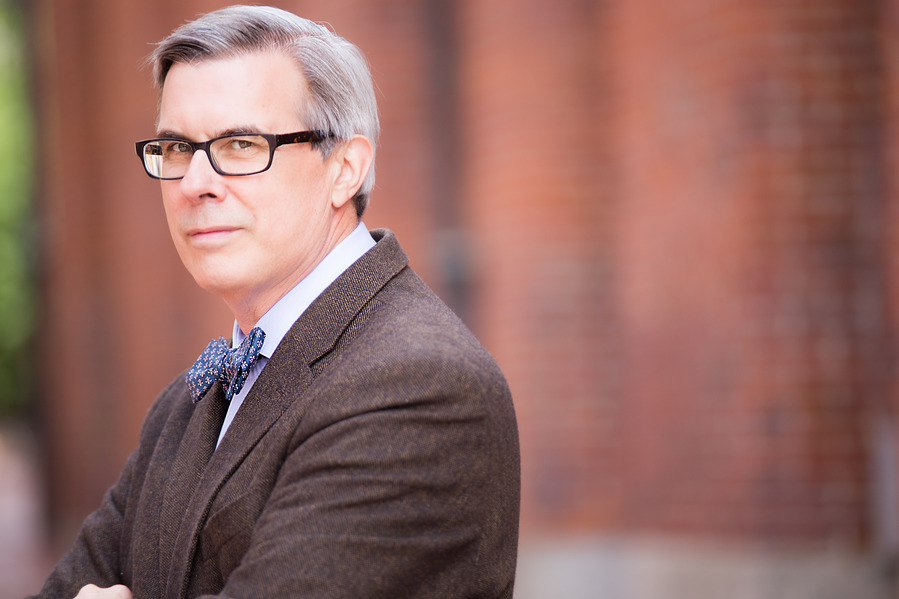
A s a boy of seven or eight, Rick Beyer crouched on Lexington Common with a pretend musket, shooting at the phantom British. His father, a physics professor at Brown University, had brought his son and daughter from East Providence to see where the opening shots were fired in the American Revolution: one of many family trips taken to historic sites. Through his dad’s influence, Rick grew up loving history and “inundating long-suffering family and friends with [fascinating] tales from history.”
Rick credits that visit to the Green as starting his “study of Lexington.”
Carried into his adult life, this love of history has influenced his career as a documentary filmmaker (with work in progress titled The Ghost Army, about a deception unit in World War II) and an author of a newly released book of quirky historical facts. He’s also to be found in colonial garb as a tour guide at the Munroe or Buckman tavern, along with his costumed wife Marilyn Rea Beyer, the well-known WUMB radio talk show host.
For the past 15 years, they have been involved in Lexington history projects with the Lexington Historical Society. “Marilyn and I are both real history enthusiasts,” says Rick of the couple who, years ago, responded to a mailing from the Historical Society inviting people to participate. Soon enough, they became costumed guides greeting visitors at the Buckman Tavern.
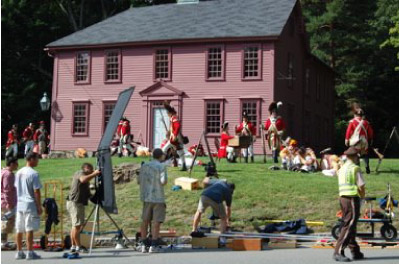
Around six years ago, they started a new aspect of their relationship with Susan Bennett, executive director of the Lexington Historical Society, who wanted a film depicting what led to the 1775 battle. Titled First Shot! The Day the Revolution Began, a seventeen-minute film directed and produced by Rick Beyer, captured extensive re-enactments around Lexington, using actual locations whenever possible. Members of the Lexington Minutemen, re-enactors from three Redcoat regiments, guides and staff from the Historical Society, and many more volunteers filled the cast, including The Reverend Peter Meek, portraying Rev. Jonas Clarke, and actor Timothy John Smith as John Adams. One part of the documentary film recounts the little-known event of Lexington’s own Tea Party, where residents tossed tea onto a bonfire and pledged their lives and fortunes to oppose the Crown. Contributing voice-overs, Marilyn Rea Beyer links the re-enactment scenes.
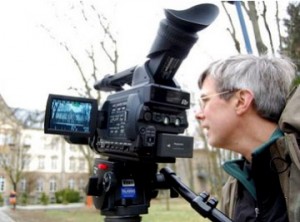
This first of Rick Beyer’s collaborative projects showing how Lexingtonians became revolutionaries is shown at the Hancock-Clarke House. You can also watch the trailer on YouTube.
In 2010 the film won a Leadership in History Award from the American Association for State and Local History and was a finalist in the New York Festivals’ Film and Television Awards. Beyer has won multiple gold medals from the New York Festivals, several Telly Awards given for “excellence in local, regional, cable, TV commercials, non-broadcast video or TV program,” and four Emmy® awards.
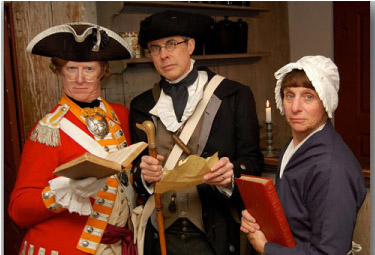
Beyer has been able to “work history storytelling into [his] job description.” Creating history films and videos for almost a decade, he has worked with A&E, The History Channel, National Geographic, and the Smithsonian Institution, among others, making films on everything from the Emancipation Proclamation to the Wright Brothers. Actor Sam Waterston narrated “Timelab 200,” an acclaimed collection of 200 history minutes produced by Beyer for The History Channel. This “Timelab” collection led to his well-received series of books telling little-known historical stories; see sidebar for more information.
Back at the Lexington Historical Society, Rick wrote FirstSHOT: The Lexington Revolutionary Experience, a new guidebook to Lexington’s history, released this past April, with photographs by Paul Doherty.
Rick credits “others” for help with the book’s text, but he is the chief writer of this new publication which the Lexington Historical Society says “serves as a most complete and clearly presented guide to all the relevant revolution sites within the town of Lexington.”
From the monuments on Lexington Green to the Old Belfry, Lexington’s role in “the first events of the American Revolution” are documented and pictured. Rick uses first-person accounts, feeling it is essential to never make up things, as in docu-dramas. He prefers “to be wired to the historical record.”
This same line of reasoning carried to his next project with Sue Bennett for the Lexington Historical Society. Beyer created audio pieces played in the rooms of the Munroe Tavern, telling the battle stories from the British point of view. The British infantry used the local, family-owned Munroe Tavern as a field hospital, and the day after the battle, the town doctor, Joseph Fiske, treated six or more British soldiers there. Audio pieces in each of the four rooms of the Tavern are told from either the British or the Monroe family viewpoints, using quotes written by the actual people of the time.
Beyer points out that “1700 British soldiers came through town that morning, and most went back [to Boston] in the afternoon.” In an effort to “interpret the battle from the British experience, Sue Bennett wanted to tell their side; include their stories,” explained Beyer. The question to be answered might be, “Who are the patriots? Those rising up or those defending the norm?” Rick has found that “everything looks different, depending on where you set up the camera. If you put the camera at a slightly different angle, you give a different point of view.”
The Lexington school system brought Rick and Marilyn Beyer to town in 1999. Their two children, Andy and Bobbie, first attended Bridge Elementary and Clarke Middle schools before graduating from Lexington High School. Bobbie went on to Tulane University in New Orleans and now works at the Perkins School for the Blind in Watertown, where her mother also works. Andy is a struggling musician in Seattle. Lexington’s history continues to fascinate Rick and Marilyn and their local history projects help them share stories with history enthusiasts, both visitors and residents.
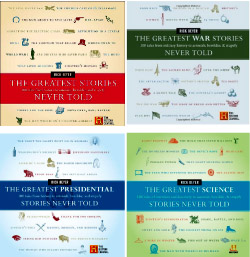
Music lovers: Listen up!
The Greatest Music Stories Never Told: 100 Untold Stories About Classical, Rock, and Jazz Music (Harper Collins, 2011) is Rick Beyer’s latest book. It’s the fifth in a series of books recording short, entertaining stories organized by title themes. Beyer’s “TimeLab History Minutes” for the History Channel led to the first book in the series, focusing, obviously, on history. Approaching Beyer during the TV production, a book agent suggested that they pitch the history minute materials with the History Channel’s support to book publishers.
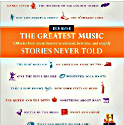 The Greatest Music Stories Never Told
The Greatest Music Stories Never Told
From sixteen proposals came four offers, with Harper Collins chosen as the series publisher for The Greatest Stories Never Told: 100 Tales from History to Astonish, Bewilder, and Stupefy in 2003. The series of little-known but fascinating tales developed from that simple start.
Next came The Greatest War Stories Never Told: 100 Tales from Military History to Astonish, Bewilder, and Stupefy (History Channel) in 2005, then The Greatest Presidential Stories Never Told: 100 Tales from History to Astonish, Bewilder, and Stupefy in 2007, followed by The Greatest Science Stories Never Told: 100 Tales of Invention and Discovery to Astonish, Bewilder, and Stupefy in 2009. You get the drift. The books “all are tightly formatted. They look the same of the shelf except for different color spines,” explains Rick. Each collection is “accompanied by an array of stunning and diverse photographs from around the globe,” reports the publisher. The Chicago Tribune praised the series as “full of tasty morsels; A delightful book to arm one for the next dull cocktail party.”
When it comes to music history, the range slides from jazz to country and from classical to hip-hop, as the book includes stories about composers, lyrics, and instruments. Arranged in chronological order, the stories begin with the “Hymn to Nikkal,” the oldest surviving song in the world, chiseled on a stone tablet in the Mediterranean 3,400 years ago up to the explanation of how Dr. Brian May is the only astrophysicist to be inducted into the Rock and Roll Hall of Fame; as the guitarist for the band Queen.
 One 1908 tidbit tells how Jack Norworth, a 29-year-old vaudeville actor with the Ziegfeld Follies, dashed off a song about Katie Casey loving baseball. The song is not remembered today, but the chorus is known and sung by Red Sox Nation and all baseball lovers: “Take me out to the ball game.”
One 1908 tidbit tells how Jack Norworth, a 29-year-old vaudeville actor with the Ziegfeld Follies, dashed off a song about Katie Casey loving baseball. The song is not remembered today, but the chorus is known and sung by Red Sox Nation and all baseball lovers: “Take me out to the ball game.”
Reading cover to cover or skimming for topics of interest, readers will later smile as they recall terrific trivia when a familiar song comes on the iPod or radio. Whether it’s the story of the monk who taught his choir to sing Do-Re-Mi or the aviation pioneer who came up with Muzak, the book will be a favorite with music lovers of all ages; or, even with the history buffs of Lexington. Any of the five books in the series will be appreciated as gifts in the season ahead.
Videos and song clips related to stories in the music book are available at www.greateststoriesnevertold.com/musiclinks.
Contact Judy Buswick, another history and music enthusiast, at jt.buswick@verizon.net
